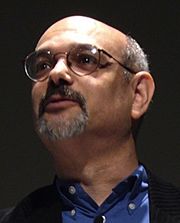Curator facts for kids
A curator is like a special manager or overseer, often for a collection of important items. You'll usually find curators working in places like art galleries, museums, libraries, or archives. Their main job is to look after the collections and help people understand the history and meaning behind the items.
The word "curator" comes from the Latin word curare, which means "to take care." Traditionally, curators work with real, physical objects. These can be artworks, historical items, or scientific collections. But today, there are also new kinds of curators, like those who manage digital information or even biological data!
What Curators Do
In smaller museums or galleries, a curator might be in charge of almost everything! This includes deciding what new items to buy or accept, making sure they are properly cared for, and keeping detailed records. They also do research on the collection and its history. Curators make sure art is packed safely for travel and share their discoveries with the public through special shows (called exhibitions) and books. Sometimes, in very small museums run by volunteers, the curator might be the only paid person on staff.
In bigger places, like large city museums, curators are usually experts in a specific area. For example, there might be a curator for ancient art or a curator for drawings. They focus on doing original research about the items and guiding the museum on what new things to collect. Other staff members, like collection managers or conservators, might handle the physical care of the items.
Becoming a Curator
To become a curator, you usually need a high level of education. Most curators have a master's degree or even a PhD in subjects like history, art history, archaeology, or anthropology.
Curators are also expected to share their knowledge with others. This means giving public talks, writing articles, or speaking at special conferences for experts. It's also important for them to know what's happening in the art or collecting world and to follow rules about how to collect items in an ethical way.
Curators in the Digital Age
Just like a museum curator chooses important objects, new types of curators have appeared because of technology and social media. These "technology curators" help us understand complex science and how it can be used in the real world. They might show how technology can help with social change or create new business ideas.
Images for kids
See also
 In Spanish: Conservador de museo para niños
In Spanish: Conservador de museo para niños




